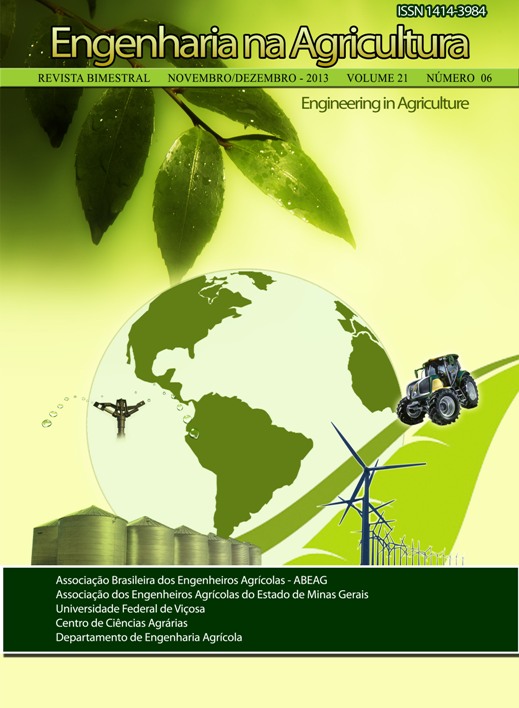SOWING TIMES OF UPLAND RICE IN THE REGION OF THE TANGARÁ DA SERRA
DOI:
https://doi.org/10.13083/reveng.v21i6.414Keywords:
balanço hídrico, Oryza sativa, precipitação, soma térmica, temperaturaAbstract
The Mato Grosso state shows irregularities in rainfall patterns, requiring a climate study seeking to establish the optimum planting dates with the lowest risk of hydric deficit. Therefore, this study aimed to identify the best sowing times with less risk climate for growing of upland rice through hydro and thermal analysis of the last five crop years for the town of Tangará da Serra, MT. We used data of temperature and precipitation of the last five years (2007/2008 a 2011/2012) provided by the Instituto Nacional de Meteorologia (INMET). The times less climate risk were determined from the simulation of crop development by calculating the degree-day and by calculating the water balance proposed by Thornthwaite and Mather, comparing with the water needs for the development stages. The duration of the phases of the culture was to E/R1 50 days, 78 days and 103 days for E/R4 E/MC. Later sowings as five times (December 15) and six (December 31) increase the total cycle time, as well as the number of days to flowering. The sowing dates were more favorable to the cultivation was 5 and 6 (December 15 and December 31, respectively).Downloads
Downloads
Published
How to Cite
Issue
Section
License
Authors who publish with this journal agree to the following terms:
The author(s) authorize(s) the publication of the text in the journal;
The author(s) ensure(s) that the contribution is original and unpublished and that it is not in the process of evaluation by another journal;
The journal is not responsible for the views, ideas and concepts presented in articles, and these are the sole responsibility of the author(s);
The publishers reserve the right to make textual adjustments and adapt texts to meet with publication standards.
From submission, the author is fully conceding the paper's patrimonial rights to the publication, but retaining the owner of its moral rights (authorship and paper's identification) according to Creative Commons Attribution-Noncommercial.








 Licensed by
Licensed by 